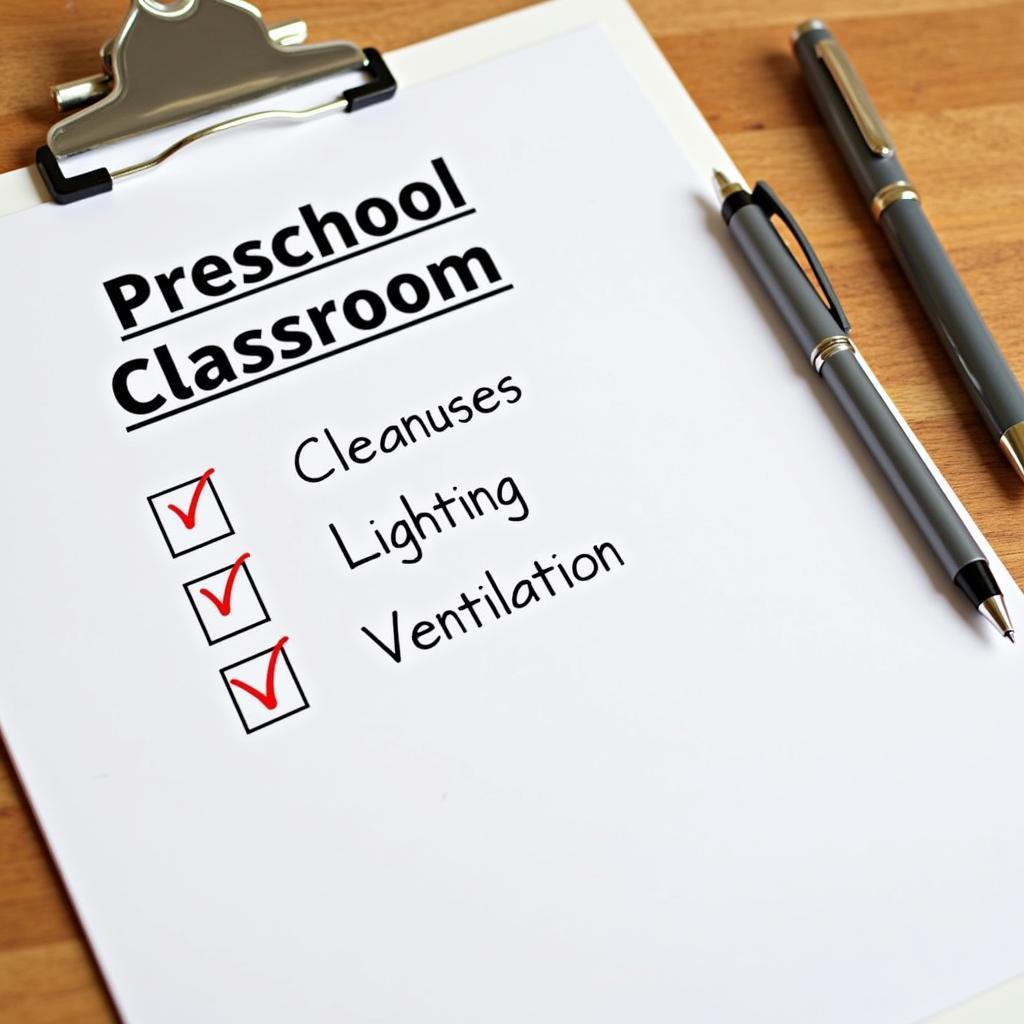“A clean house is a cool house, a clean bowl makes rice taste better” – this old saying has been ingrained in the minds of generations. So, how do we make the learning environment for preschoolers as “clean” and “delicious” as a fragrant bowl of rice? The answer lies in the “Kindergarten Classroom Environment Inspection Report,” a small tool with a big responsibility in ensuring a safe and healthy learning environment for children.
The Importance of Kindergarten Classroom Environment Inspection Reports
An environment inspection report is more than just a piece of paper. It’s a reflection of the quality of the learning environment, a measure of the school’s care and attention for the children. A detailed and comprehensive report helps us identify potential hazards early, allowing for effective remedial and preventative measures. Ms. Lan, a kindergarten teacher at Sao Mai Kindergarten in Hanoi, shares: “The inspection report is like a compass guiding me to maintain the quality of the classroom environment, providing the best learning space for the children.”
Guide to Creating a Kindergarten Classroom Environment Inspection Report
What should a standard inspection report include? Let’s find out!
Essential Contents of the Report
- General Information: School name, class name, inspection date, participants in the inspection.
- Inspection Items: Cleanliness of the classroom, toys, restrooms; safety of equipment and supplies; lighting, ventilation; outdoor playground. It’s important to check even hidden corners that are easily overlooked. As the saying goes, “Better safe than sorry!”
- Inspection Results: Detailed record of the actual condition of each item.
- Proposed Remedial Measures: Specific solutions for identified issues.
- Signatures of Participants: Ensuring accuracy and objectivity of the report.
 Kindergarten classroom environment inspection report form example
Kindergarten classroom environment inspection report form example
Key Considerations When Creating a Report
- Regular, Periodic Inspections: “Constant dripping wears away the stone,” regular inspections will help maintain a consistently high-standard learning environment.
- Objectivity and Honesty: Record the actual situation accurately, without concealing or embellishing the results.
- Close Collaboration Between School and Family: Harmonious coordination between family and school will create the best environment for children’s development. Ms. Nguyen Thu Thuy, a preschool education expert, in her book “Nurturing Preschool Children,” emphasizes the importance of collaboration between family and school in building a safe and effective learning environment for children.
Common Scenarios During Classroom Environment Inspections
- Discovering damaged toys: Remove them immediately to prevent potential hazards for children.
- Unhygienic restrooms: Request cleaning staff to thoroughly clean and disinfect.
- Sharp or pointed objects in the outdoor playground: Remove them immediately to ensure children’s safety during playtime.
Conclusion
The kindergarten classroom environment inspection report, though seemingly small, carries great significance. It reflects the responsibility and love of the school and teachers for the children. Let’s work together to build a safe and healthy learning environment, so that children can “eat well, sleep soundly,” and develop comprehensively, both physically and mentally. If you have any questions, please contact Phone Number: 0372999999, or visit us at: 234 Hao Nam, Hanoi. Our customer service team is available 24/7. Please share this article if you find it helpful and leave a comment below to discuss further! Explore more articles about preschool education on the “TUỔI THƠ” website to stay updated with the most useful information.